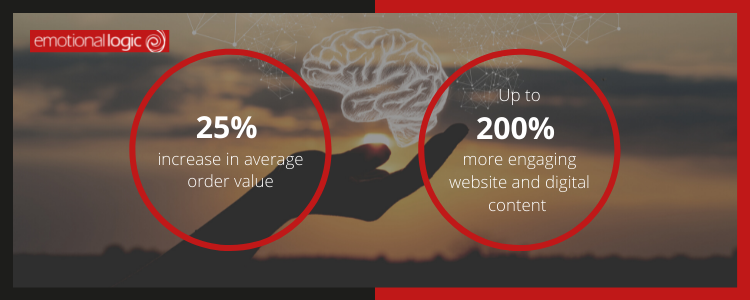It's fair to say that the majority of all consumers have been converted to this new online way of life and are enjoying the hassle-free process of shopping online because of the pandemic. Although consumers had already bought online before, many haven't - specifically the older generation. With online shopping, consumers believe it is more convenient not having to leave the comfort of their own home, not paying for parking or having to drive/take public transport to the destination, as well as enjoying looking around online for discounts and price comparisons on big-ticket items.
Shopping habits are all about convenience; with more shoppers shopping online; the journey to the end goal has to be more efficient.
What is website optimisation? And how does it improve User Experience (UX)?
Naturally, every business wants to succeed and do the best it possibly can. But sometimes, what businesses think will work; doesn’t. This is how Market Research can help. By definition Website Optimisation is; the process of using controlled experimentation to improve a website’s ability to drive business goals. Ultimately it means improving the performance of a website and generating more sales.
Did you know that 71% of shoppers believe they will get a better deal online?
The ability to research a product and compare prices is one of the key reasons people shop online instead of in-store. It is important to make sure your website provides shoppers with a detailed product page with related photos or videos to support the text.
Also, with smartphones being so commonly used now for online shopping, your website must be compatible. Social media has become a popular channel for consumers to make a purchase too. Streamlining the process of seeing a product, putting it into their basket, and making a payment as easy as possible. Having better UX will result in more clicks, more lead generation, better brand recognition, and ultimately, higher conversion rates.
According to research, our attention spans have decreased. In 15 years, the average attention span has reduced from 12 seconds in 2000 to 8.25 seconds in 2015. The pandemic has impacted on this further. But why? Consumers are spending more time indoors social media usage is increasing, and getting quick hits of dopamine from feeds that have the perfect algorithm to keep them entertained for hours. If you think about it, storefronts that aren’t engaging or attractive won’t generate a lot of attention – this applies online too. Especially in today’s world.
Website visitors value good UX delivery - using this via website optimisation will improve your search engine ranking and keep people on your website for longer!
What caused the shift?
People of all ages have had to move online because retail stores were closed. There have been record-breaking statistics on the number of purchases made online from 2020-21 and eCommerce is now one of the most popular methods of selling a product or service. Having an up-to-date website that will connect with your target audience is key. This will drastically increase conversion and sales rates. As an example, Spring-Summer 2021: one of the fashion brands where UK consumers had significantly decreased purchasing was Primark – with the reason being, they did not have an online presence, and with stores being closed, it has left consumers with no other option. It's sad to say, but brands that don’t move online will be getting left behind.
Consumer behaviour in the UK and US has been disrupted, and 48% of people have changed their habits and have increased purchases, and plan to incorporate these behaviours going forward. For example, Think with Google have noticed different consumer behaviours, in the past year 1 in 4 clothing shoppers have bought from a new brand or retailer; 75% of womenswear and 83% of menswear shoppers said that they will continue to buy from these same new retailers over the next 6 months.
For you to stay ahead of the game, you need to know exactly what is going to drive your consumers to make a purchase.
How we can help:
Most of the online browsing process happens subconsciously; even if we interview people about their experiences, it will only reveal a fraction of what happened; or what they think has happened. For example, Robert Evans (film producer) said, “There are three sides to every story: your side, my side, and the truth.” Evans wasn’t lying when he said this, as people can create false memories or twist the truth (unknowingly) to make memory work in their favour. This can also be known as the Mandela effect. There are numerous examples of the Mandela effect: such as Star Wars – “Luke, I am your father” commonly quoted from “Star Wars: The Empire Strikes Back” is just, “I am your father” and many people who quote the famous line from Snow White and the Seven Dwarfs “Mirror, Mirror on the Wall”. However, the Wicked Queen says, “Magic mirror on the wall…”. *Cue everyone to question their memory*.
How do you expect your web users to remember or tell the truth during traditional research methods when consumers don’t have an accurate depiction of their own experiences? Having advanced technologies as hard evidence can help develop your websites which will dive deeper into your customer's true subconscious. Most false memories are usually harmless, but when it comes to your brand, you want to make sure you’re reaching your true audience.
Independent tracking research has shown that our research insight delivers at least 44% more sales impact than traditional market research. Meaning your brand, destination, new product launches, marketing strategies, and digital communications will have much more impact.
-
Proven results

-
See how people navigate your site through modern technologies in real life.
-
Check whether people understand and identify which elements may require a closer look – ‘we’ think we know what people want, but truth be told, we don't know ourselves.
-
Discover the truths and develop the most effective eCommerce site for your target audience.
Our insight from over a decade of website optimisation research will help you optimise look and feel as well as functionality to guide users implicitly to action. Whether you are looking for enquiries or sales, our tools are proven to increase conversion rates. We can help you test and optimise your site at any stage of the development process.
We have delivered award-winning research solutions that go deeper than surface opinions for more than a decade. Our solutions reveal what drives brand relationships, makes advertising work, and motivates people to act. Find out what your customers want and see how our tool can help you today.
